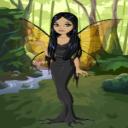Yahoo Answers is shutting down on May 4th, 2021 (Eastern Time) and beginning April 20th, 2021 (Eastern Time) the Yahoo Answers website will be in read-only mode. There will be no changes to other Yahoo properties or services, or your Yahoo account. You can find more information about the Yahoo Answers shutdown and how to download your data on this help page.
Trending News
What is this pink mold growing on my trees after a wildfire?
After the fires in Oklahoma it finally rained a little, go figure, and the next day all the trees that were in the fire began to grow a bright pink mold. I have asked several people and no one seems to know what it is. It only grew on the areas that were burnt. For example some trees were only burnt on one side, from top to bottom, due to the wind and that was the only part of the tree that was affected. What is this pink mold and is it dangeous to my family and animals?
4 Answers
- Anonymous9 years agoFavorite Answer
The colloquial term mold (or mould) is applied to a large and taxonomically diverse number of fungal species where their growth results in a moldy appearance of objects, especially food. The objects become discolored by a layer of fungal growth. Molds are fungi that grow in the form of multicellular filaments called hyphae. A connected network of these tubular branching hyphae, called a mycelium, is considered a single organism. The hyphae are generally transparent, so the mycelium appears like very fine, fluffy white threads over the surface. Cross-walls (septa) may delimit connected compartments along the hyphae, each containing one or multiple, genetically identical nuclei. The dusty texture of many molds is caused by profuse numbers of asexual spores conidia formed by differentiation at the ends of hyphae. The mode of formation and shape of these spores is traditionally used to classify the mold fungi. Many of these spores are colored, making the fungus much more obvious to the human eye at this stage in its life-cycle. In contrast, fungi that can adopt a single celled growth habit are called yeasts.
Molds are considered to be microbes and do not form a specific taxonomic or phylogenetic grouping, but can be found in the divisions Zygomycota and Ascomycota. In the past, most molds were classified within the Deuteromycota. Molds cause biodegradation of natural materials, that can be unwanted when it becomes food spoilage or damage to property. They also play important roles in biotechnology and food science in the production of various foods, beverages, antibiotics, pharmaceuticals and enzymes. Some diseases of animals and humans can be caused by molds, usually as a result of allergic sensitivity to their spores or caused by toxic compounds produced as molds grow.
Source(s): http://www.youtube.com/watch?v=3ENIhmDskmY - topazLv 79 years ago
Could you provide a photo of this, or more of a description of what you're seeing? (size, shape, stalked or not, if similar to mushrooms does it have gills or pores)
There aren't a lot of fungi that are pink, but many grow on dead/decaying wood. They also have colorful names to go along with their color (carnival candy slime, wolf's milk slime, red raspberry slime, netted Rhodotus, zoned Phlebia, red tree brain). You can also google photos of these to see if any are what you're seeing.
- Anonymous5 years ago
contained in the northern hemisphere, moss grows primarilly on the north aspect of the tree. it really is because moss does not thrive contained in the daylight, and the north aspect of a tree (contained in the northern hemisphere) receives little to no sunlight. contained in the southern hemisphere, the different is authentic - the south aspect of the tree would not get sunlight, therefor grows moss. Im not confident what aspect mould grows on.
- Anonymous7 years ago
tricky aspect look on with yahoo and bing that will can assist




